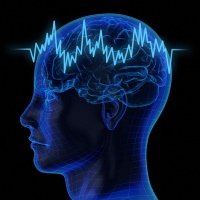Robert Lindeman has been studying sleep cycles of a variety of individuals for years.
As a sleep consultant, Lindeman works to ensure all of his clients are receiving the best night sleep possible. One of the most important aspects of the sleep cycle is REM sleep.
Making up approximately 20% of your nightly sleep, REM sleep is a portion of the sleep cycle during which the brain is particularly active, even possibly more active than it is while awake. REM stands for Rapid Eye Movement and, as the name suggests, is associated with intermittent and rapid side-to-side movement of the closed eyes. The reason for the eye movement is under some debate with the most common explanation being that the movement is related to the visual images the brain produces while in the REM phase of the sleep cycle.
A lot happens to the brain and body while in REM sleep. As already mentioned, dreaming is typically associated with REM sleep but not any type of dreams. During REM sleep, a person’s dreams are likely to be more vivid and therefore more memorable. However, due to what is referred to as muscular atonia, the body goes through temporary muscle paralysis. Researchers along with Robert Lindeman suggest that this is built-in to protect ourselves from the would be movements our brain would signal for our body to do during these vivid dreams. Some people don’t experience the paralysis that typically occurs during REM sleep. This is referred to as REM behavior disorder and though it can take many forms it is best known as sleepwalking.
There are four stages of the sleep cycle and a typical person can go through the cycle 4 or 5 times each time they sleep. The first stage is the shortest and it is characterized by sleeping very lightly. It typically only lasts for 5 to 10 minutes. The second stage is also a light sleep but your heart starts to slow and your temperature drops. This is your body preparing for deep sleep. During the third stage, and the last before REM sleep, you are already in a deep sleep from which it can be more difficult to wake from. The final stage is REM sleep and it can account for 90 to 120 minutes of an entire night of sleep. After REM sleep, the cycle would start over with the first stage. Interestingly, a newborn baby spends up to 80% of their sleep time in the REM portion of the cycle. Typically, the first time you enter into REM sleep, it is a much shorter period of time then the subsequent cycles and the period of time increases with each cycle.
Generally, when a person does not reach the REM portion of the sleep cycle, there are actually few consequences with the most severe being an inability to learn complex tasks. This lends itself as possible explanation for why a young person would spend 4 times as long in REM sleep as an adult as there is a lot of information for a young person to process at the end of a day. However, if a person is deprived of REM sleep, they are likely to reach REM sleep quicker the next time they sleep as well as spend more time in that portion of the cycle.
To learn more about Robert Lindeman and his career as a sleep consultant, check out his professional profile on Social Career Builder: http://socialcareerbuilder.com/robert-lindeman/.
